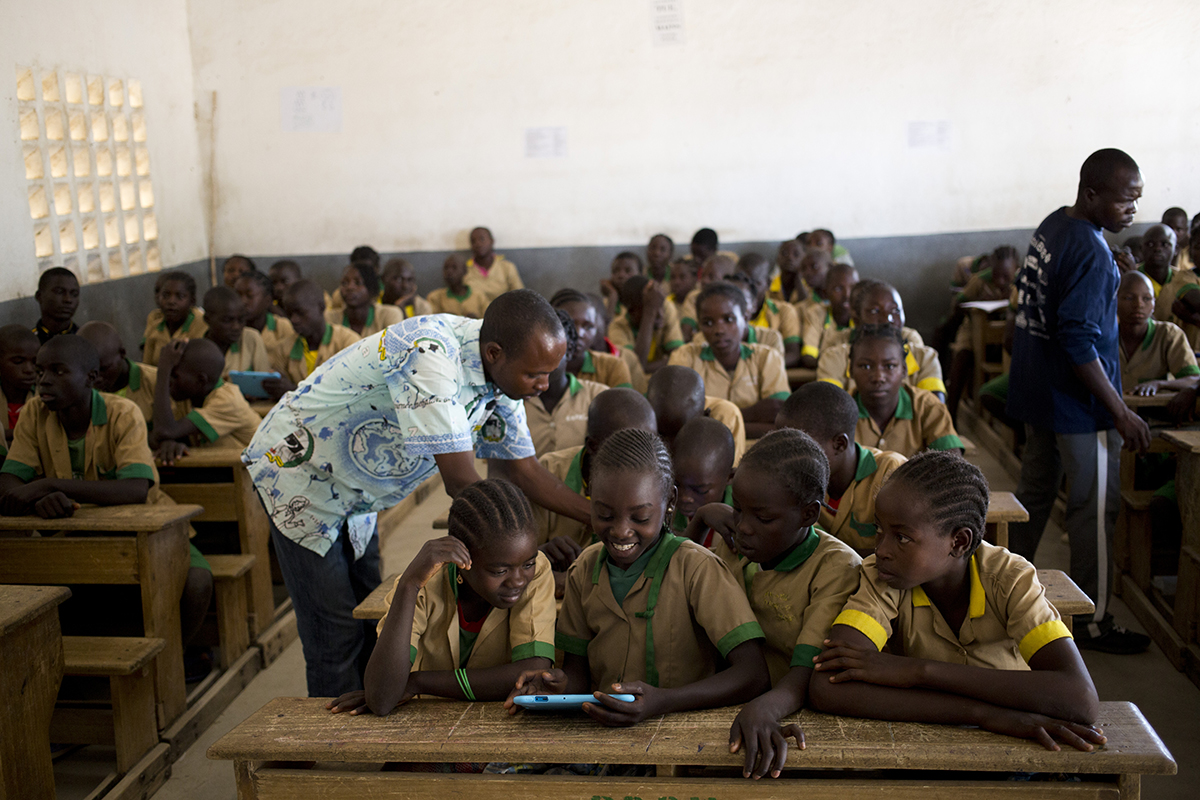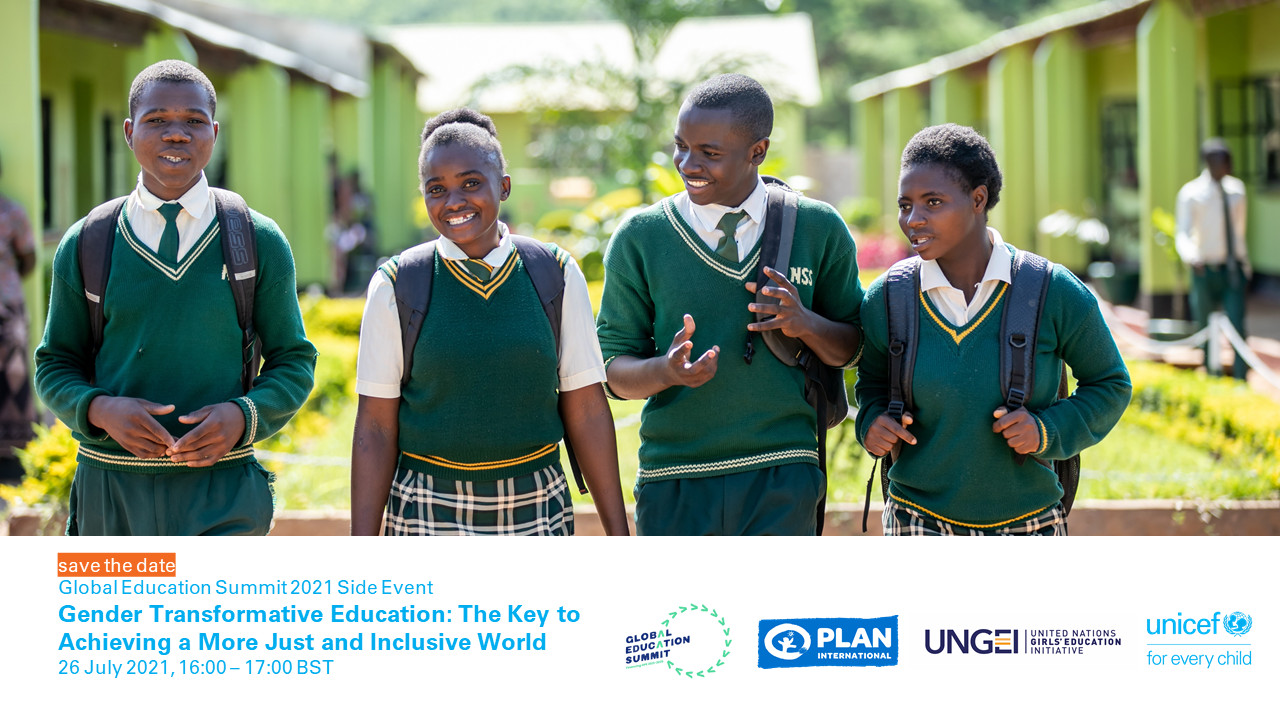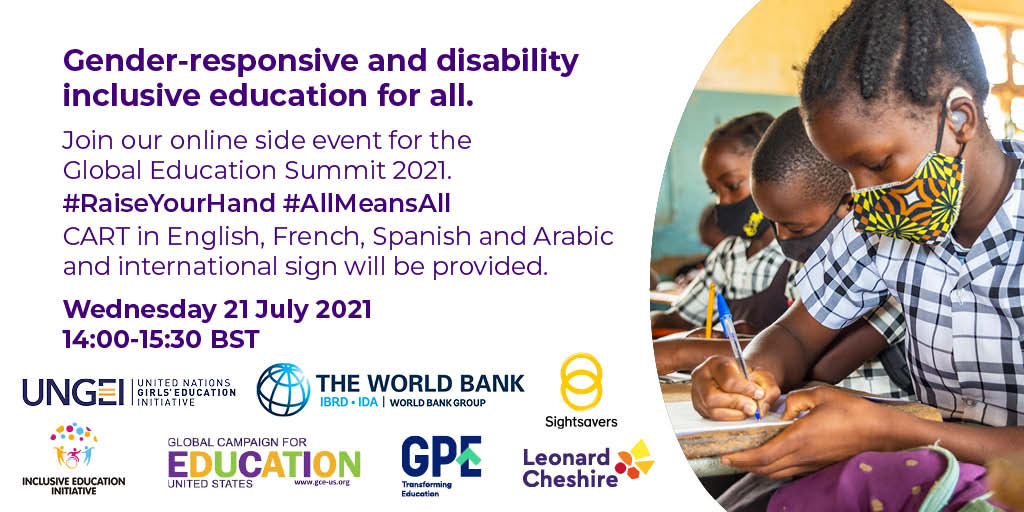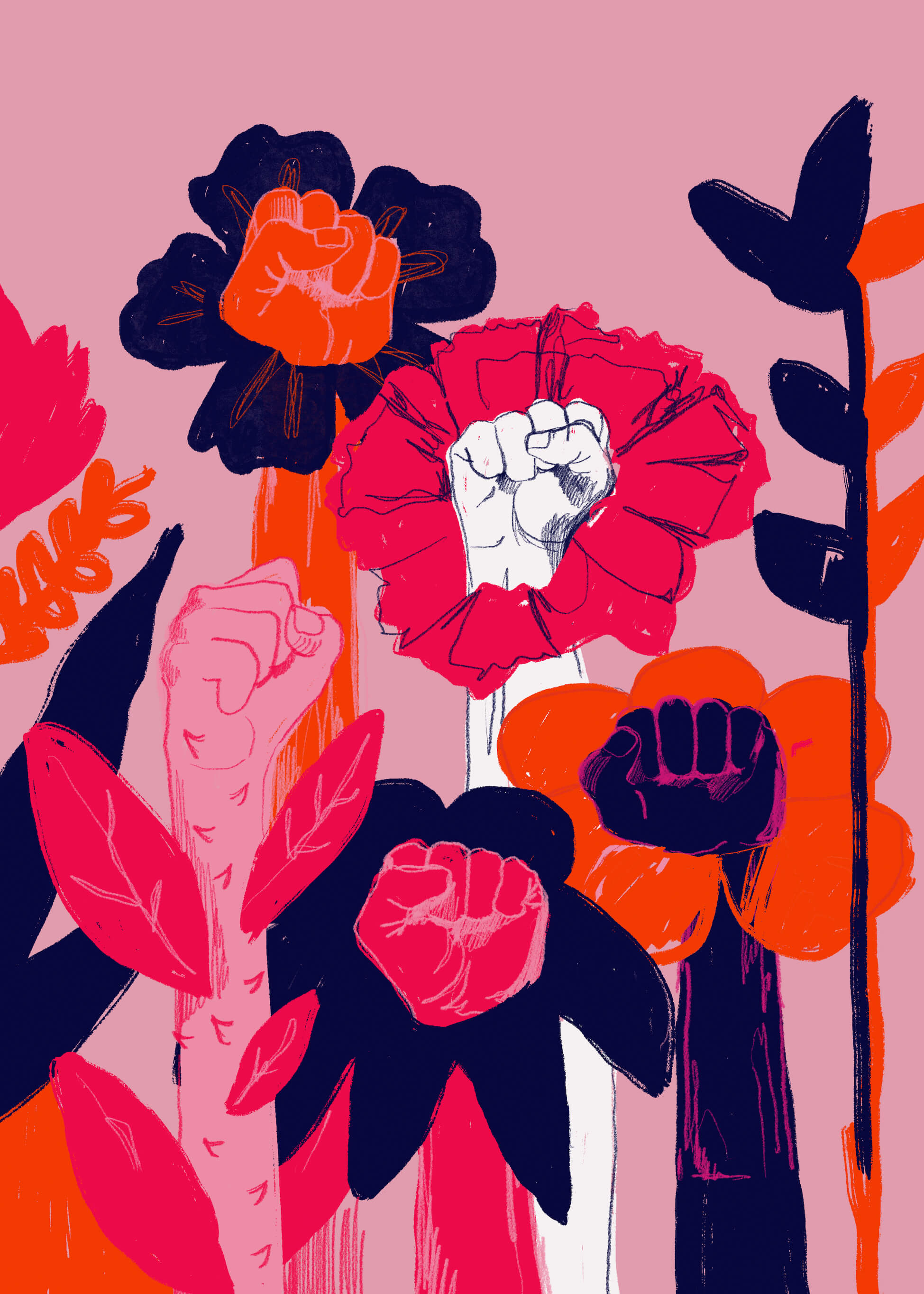This year’s High-Level Political Forum (HLPF2019) was an extraordinarily ambitious event which took place over ten days, from 9 to 18 July 2019. The theme, ‘Empowering people and ensuring inclusiveness and equality,’ was directly in line with the overarching commitment of the Sustainable Development Goals (SDGs) to ‘Leave no one behind.’ SDG 4: quality education was one of six goals reviewed in depth at HLPF2019, with the review delivering a somber reality-check — we are far from achieving Agenda 2030.
Education is a means of social and economic mobility, but it can also be a source of inequality. The lack of access to quality education can derail people.
Here are five key takeaways from the HLPF and what they mean for our work in gender and education:
1. The hardest-to-reach children remain out of school, particularly the poorest rural girls with disabilities, primarily in sub-Saharan Africa.
Only one quarter of all countries are spending 15–20 per cent of their budget on education, the minimum amount determined necessary to meet SDG 4 targets. New data was presented highlighting what we know and reminding us of the real risks of increasing inequality rather than of a world where we are truly ‘leaving no one behind’:
- Primary and lower-secondary out-of-school rates are projected to remain the same as today by 2030
- Only two in three countries have achieved gender parity in education
- 85% of countries reported higher out-of-school rates for rural areas
- Children with disabilities are more than twice as likely to be out-of-school
Not surprisingly, the Equal Measures 2030 SDG Gender Index shows a sea of red (i.e. poor or very poor) scores on multiple girls’ education indicators, particularly for countries in sub-Saharan Africa. The overarching narrative of the workings of multiple intersectionalities has not changed — girls who are young, disabled, displaced, ethnic minorities, first generation learners and live in rural areas are the most marginalised when it comes to access to quality education.
2. We need to look beyond our basic commitments.
The Beyond Commitments GEM Report launched at HLPF2019 reminds us that there is a need to realign national policies with international commitments. The six areas of commitments in which we need to look beyond our existing policy mechanisms are:
- Beyond averages: equity and inclusion
- Beyond access: quality and learning
- Beyond basics: content fit for sustainable development
- Beyond schooling: lifelong learning
- Beyond education: cross-sector cooperation
- Beyond countries: regional and global cooperation
The GEM Report publication calls for a more conscientious evaluation of national policies to ensure that they are expanding the vision as well as increased collaboration between organisations, regions, and sectors by rethinking gender and education issues as a shared responsibility.
3. We need common measures of success for girls’ education interventions.
Improving gender and education monitoring and evaluation mechanisms is about more than just data disaggregation. At the launch of the Making Evaluation Work for the Achievement of SDG 4 Target 5 report, Dr Karen Mundy pointed to the problem of database disorganisation and a lack of a common framework for evaluations when it comes to equity and education in general. She called for the establishment of a data coalition or database at the global or at least regional level to standardise common measures of success and encourage evaluators to communicate with other evaluators. When it comes to data on girls’ education interventions, similarly there is a severe lack of complete and standardised information on the costs and impacts of interventions, making it hard for policy makers to choose between the wealth of activities which have been developed.
We have been relying on our old practices of M&E which have not moved us forward.
4. We need innovation and strategic private sector engagement for the most marginalised girls.
The landscape of international aid is changing; traditional donors are no longer as dominant as they once were a generation ago. The SDGs are pushing for greater public-private cooperation and greater mobilisation of private investment and innovation to support the SDGs. At the Innovating Partnerships with the Private Sector HLPF2019 Side Event, the Kampala Principles were introduced for more effective private sector engagement. Of particular importance is Principle 5: Leave No One Behind. However, the privatisation of education has severe implications for social equality and consequently the poorest are usually ‘left behind.’ We need to ensure that public-private partnerships to increase efficiency do not happen at the expense of the most marginalised girls but rather that innovation and engagement with the private sector is for the benefit of most marginalised.

5. Countries should increase tax progressivity to fund education.
There is a major gap in spending, where most of the current spending on the SDGs is carried out in high-income economies little is done in lower-income economies. In the education sector specifically, only one quarter of all countries are spending 15–20 per cent of their budget on education, the minimum amount determined necessary to meet SDG 4 targets. While the GEM Report estimates a funding gap of US$39 billion per year, aid for education has remained relatively constant since 2010. At the HLPF ‘Financing the SDGs: Moving from words to action’ roundtable held on 15 July 2019, it was stated that while additional funds can be raised through private sector donors, funding should also come from increasing the progressivity of tax policies. While most countries employ a progressive tax regime for taxing income, the reality is that in most developing countries, taxes are still regressive overall because the poor pay a considerable percentage of their income through consumption taxes. At the same time, education can reach up to 50% of household expenditure in some countries, a significant disincentive for households living in poverty to keep girls in school. Governments need to re-evaluate their fiscal policies to target inequality more broadly to lessen the financial pressure for poor households and raise money to meet the minimum 15–20 per cent requirement for education expenditure.
Conclusion
The five key takeaways shared integrate the main themes that emerged at HLPF education events with a reflection on the implications of those themes for our work in gender and education. Access to quality education is an intersectional issue. However, in many panels a gendered perspective was noticeably absent. Gender equality in education is a means for achieving gender equality through education, and the HLPF neglected speaking to its critical importance. Even so, the 10 days of HLPF2019 have given us a lot to take in and digest, though most of what we learned was neither new nor surprising information. After a panel on education in emergencies, one panelist said privately “I don’t want to be up here in ten years saying the same things I’ve said today.” We are already almost a third of the way to 2030 since the SDGs were launched and we cannot delay action any longer. We need to build serious momentum around ensuring inclusive and equitable quality education for all as the foundation for sustainable development.


